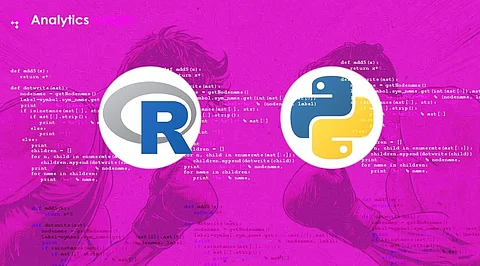
- Insights
- Cryptocurrencies
- Stocks
- White Papers
- Industry
- Geography
- Insights
- Cryptocurrencies
- Stocks
- White Papers
- Industry
- Geography


Data analysis and statistics are essential skills for anyone who wants to work with data and extract meaningful insights from it. Whether you are a researcher, a business analyst, a data scientist, or a student, you will need to use a programming language that can help you perform various tasks, such as machine learning, statistical modeling, data processing, and data visualization.
In this article, we will compare Python vs R for data analysis on various aspects, such as learning curve, data manipulation, data visualization, statistical analysis, data analysis, machine learning, and more.
One of the first factors to consider when choosing a programming language is how easy or difficult it is to learn and use. Both Python and R are considered fairly easy languages to learn, but they have some differences that may affect your learning experience.
Python is a general-purpose, high-level language that has a simple and intuitive syntax that resembles natural language. Python code is easy to read and write, and follows the principle of "there should be one—and preferably only one—obvious way to do it". Python is also a versatile language that can be used for various purposes
R is a specialized, domain-specific language that was created for statistical computing and graphics. R code is also easy to read and write, but follows the principle of "there are many ways to do the same thing". R is also a flexible language that allows you to create your own functions and objects, and modify existing ones
The process of changing, purifying, and reorganizing data so that it is ready for analysis is known as data manipulation. Both Python and R have powerful tools and libraries for data manipulation, but they have some differences in how they handle data structures and operations.
Python has a built-in data structure called a list, which can store any type of data, such as numbers, strings, or other lists. However, lists are not very efficient for data manipulation, as they are slow and consume a lot of memory. Therefore, Python users often rely on external libraries, such as NumPy and pandas, to work with data.
R has a built-in data structure called a vector, which can store homogeneous data, such as numbers, in a one-dimensional sequence. Vectors are fast and memory-efficient, and support various mathematical and statistical operations.
Data visualization is the process of creating graphical representations of data to communicate and explore information. Both Python and R have powerful tools and libraries for data visualization, but they have some differences in how they create and customize plots.
Python has a built-in library called matplotlib, which provides a low-level interface to create and customize various types of plots, such as line plots, bar plots, scatter plots, histograms, and pie charts. Matplotlib is flexible and versatile, but can be verbose and complex to use. Therefore, Python users often rely on external libraries, such as seaborn and plotly, to create and customize plots.
R has a built-in library called base R, which provides a low-level interface to create and customize various types of plots, such as line plots, bar plots, scatter plots, histograms, and pie charts. Base R is flexible and versatile, but can be verbose and complex to use
Statistical analysis is the process of applying statistical methods and techniques to data to test hypotheses, infer parameters, and draw conclusions. Both Python and R have powerful tools and libraries for statistical analysis, but they have some differences in how they perform and interpret statistical tests and models.
Python has a built-in library called scipy, which provides a module called stats, which provides various functions and classes to perform and interpret various statistical tests and models, such as t-tests, ANOVA, chi-square, linear regression, and logistic regression. Scipy is fast and reliable, but can be limited and inconsistent in terms of output and documentation.
